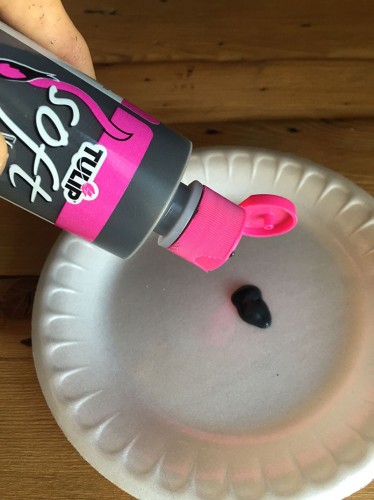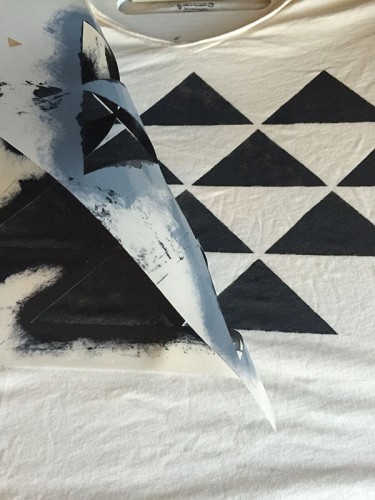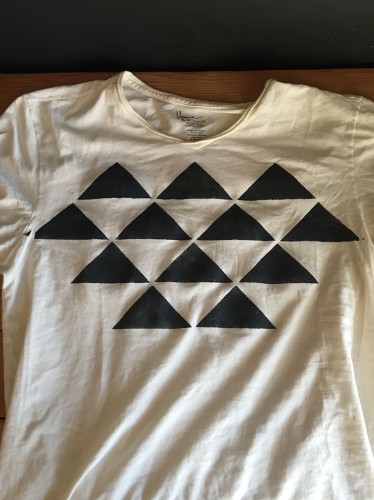GQ asked me to do 8 custom paintings for a GAP event they were curating for a San Francisco location. They wanted stencil paintings of San Francisco imagery and the canvas was to be Gap’s new khakis. This is a dreamy project for me not only because of the client but also because I used to live in San Francisco and have a big place in my heart for this city and because I often paint on tarps, see some of my art below.
So painting I can handle, but deconstructing and then reconstructing the khakis to be canvases, not my expertise. Enter Saira Huff. Designer and Super Seamstress to the rescue! A friend connected us and we clicked, she got exactly how the canvases should look. Hints of pant elements, not too much, use of the inner materials a bit, all just spot on. Check out her new store if you are in Brooklyn for vintage and custom finds.
Pants before
Saira with pants after or canvas
a shot from Saira’s shop, Vintage Punk relics, custom work, go check it out
I then started planning which stencils will go with which color khaki/canvas as well as how I can incorporate some layering and pattern into the pieces. I wanted the pattern involved as SF has so much life and history and the unique people that inhabit the city provide it so much influence and culture.
I used my new stencil brushes for the job, so excited to have designed these quality brushes!
As soon as I set up to start painting (I paint larger paintings on the floor), Larry has to be involved. Faithful assistant…
Scallop patterns for sea and air…
I use a variety of brushes when I make a painting to get different textures into the piece…
After I layer some pattern in, I like to paint a loose silhouette layer. This will get a more defined stencil detail layer over it but here’s where I add movement and some energy to the piece. In this case, the power of the cityscape within the charming SF landscape.
Then the detail gets painted in…
And here it is stretched…
Painting the Painted Ladies was fun too, I love the old Victorians on San Francisco.
Stretching canvas and stapling it is pretty satisfying…
Then they were done! Shipped off to San Francisco, my second home, for a fun time with GQ and the Gap!
And here are images from the Gap event sent to me by my friend Katie Elks and my brother Charles.
I like how the Gap displayed the art in the midst of the khakis.























































